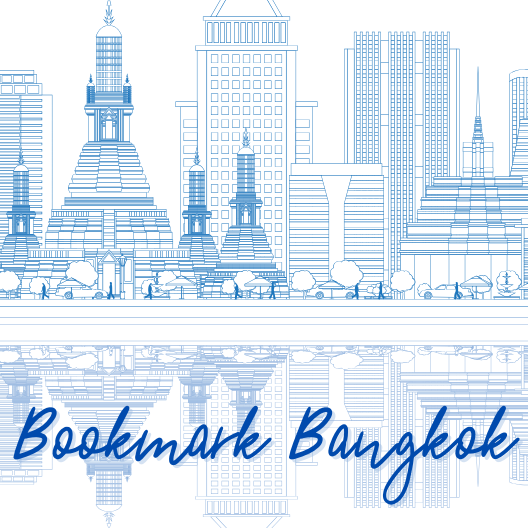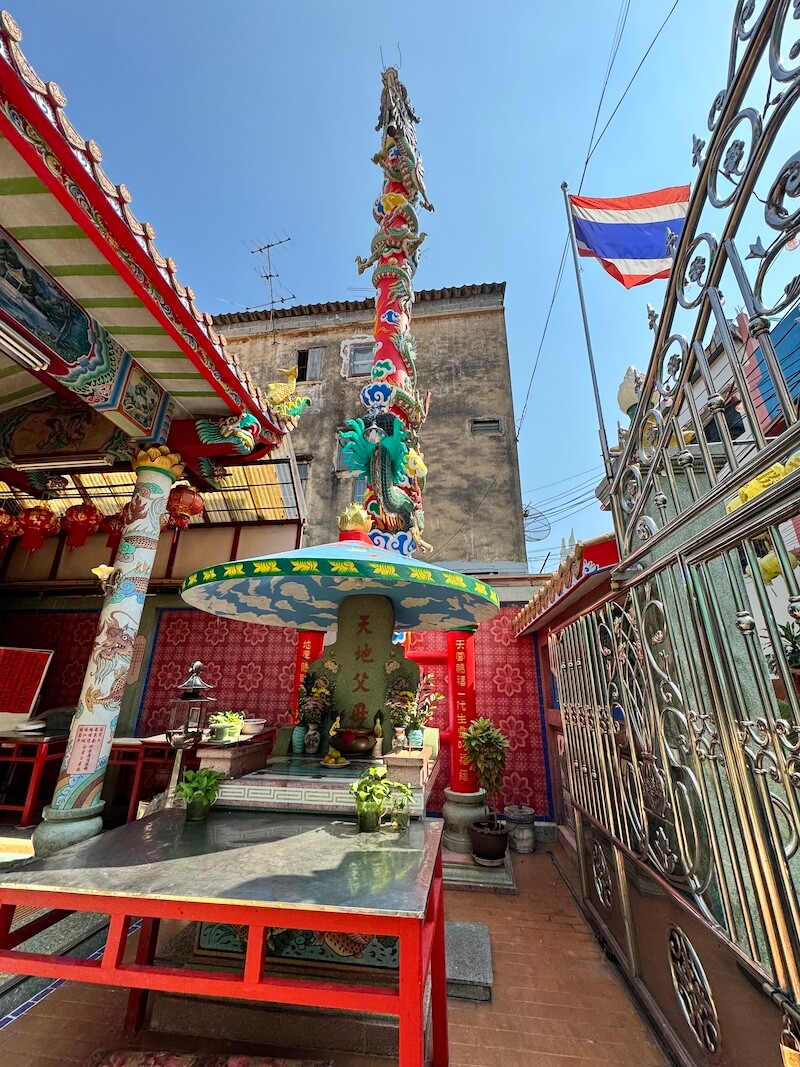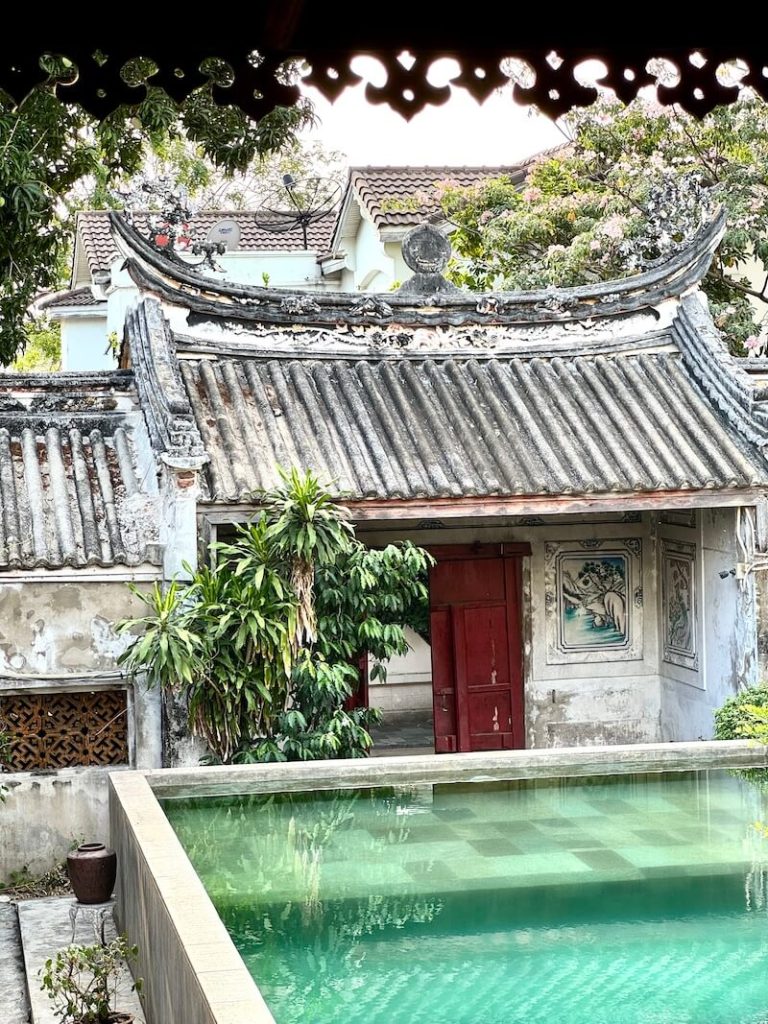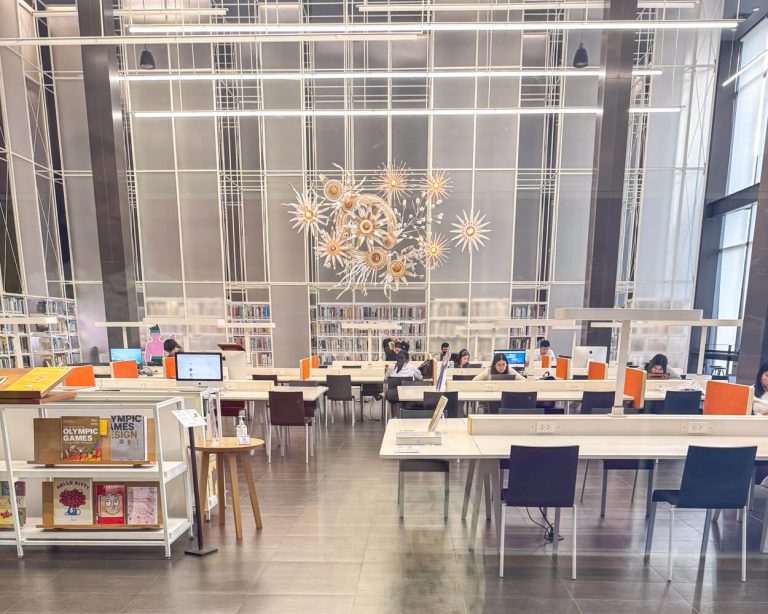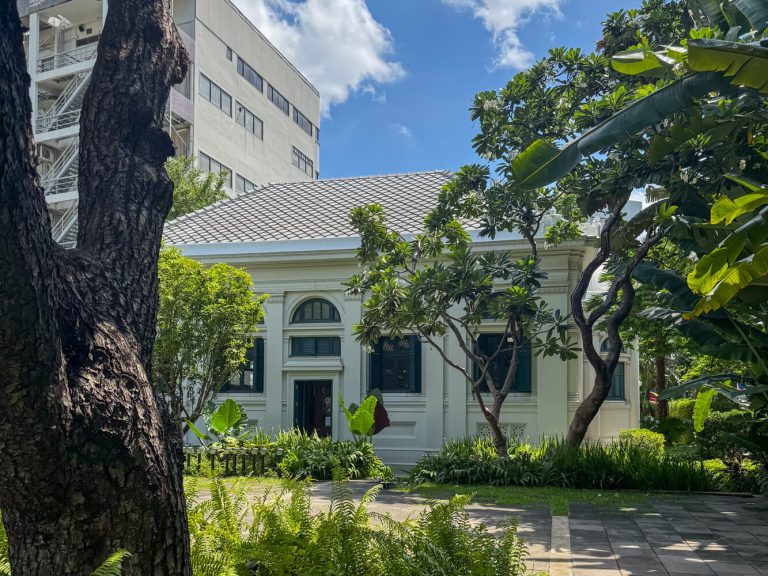Hok Lien Keng Shrine: Talat Noi’s Colorful Secret Spot
Finding this small Chinese shrine was a happy accident, the result of wandering around the small sois and alleys of Talat Noi on my way to River City Bangkok, one of my standbys in the area.
It's one of those places that feels almost too hidden to enter, tucked away in a hidden but welcoming little plot along Soi Charoen Phanit amidst the scattershot cityscape of Talat Noi, an eclectic mix of auto parts shops and trendy cafés. But its colorful pagodas and dragon tower beckon your curiosity, and its open gates welcome you to enter.

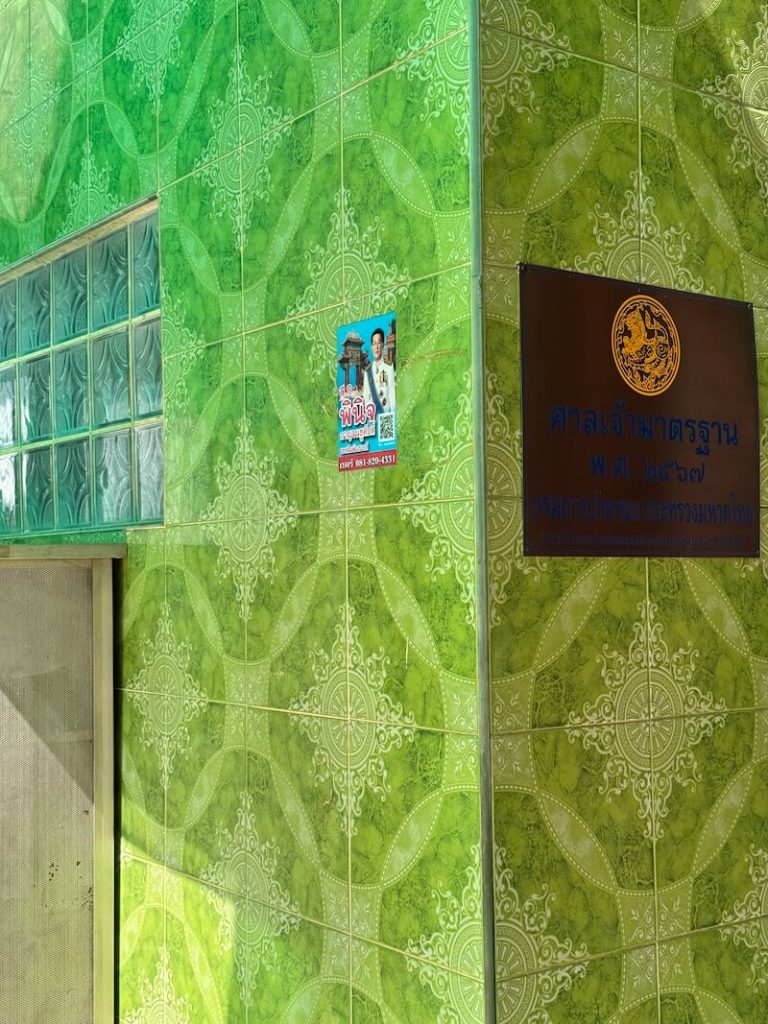
After I stumbled across it, I figured I'd do what I usually do: take a bunch of photos, enjoy the visit, and research about it later.
But little did I know just how difficult researching it would be -- or how many incredible rabbit holes this small little temple would lead me down.
After extensive research -- I ran every photo I took through a translator app, hoping for a shred of information on the temple I had just visited -- I discovered a name: Hok Lien Keng Shrine.
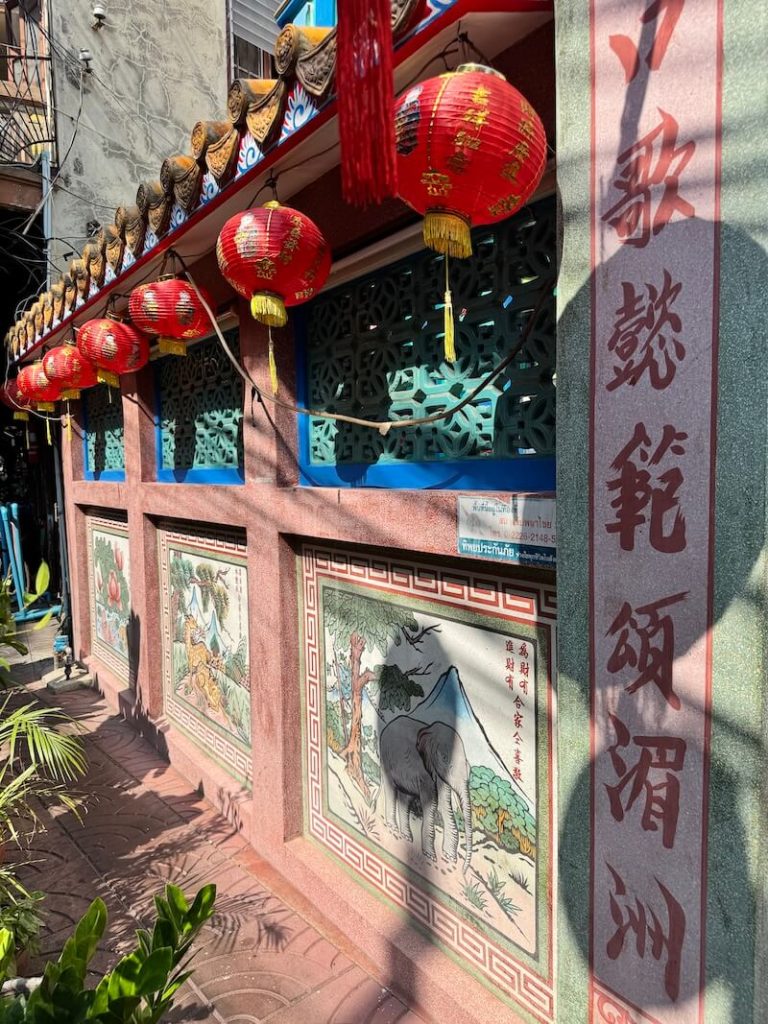
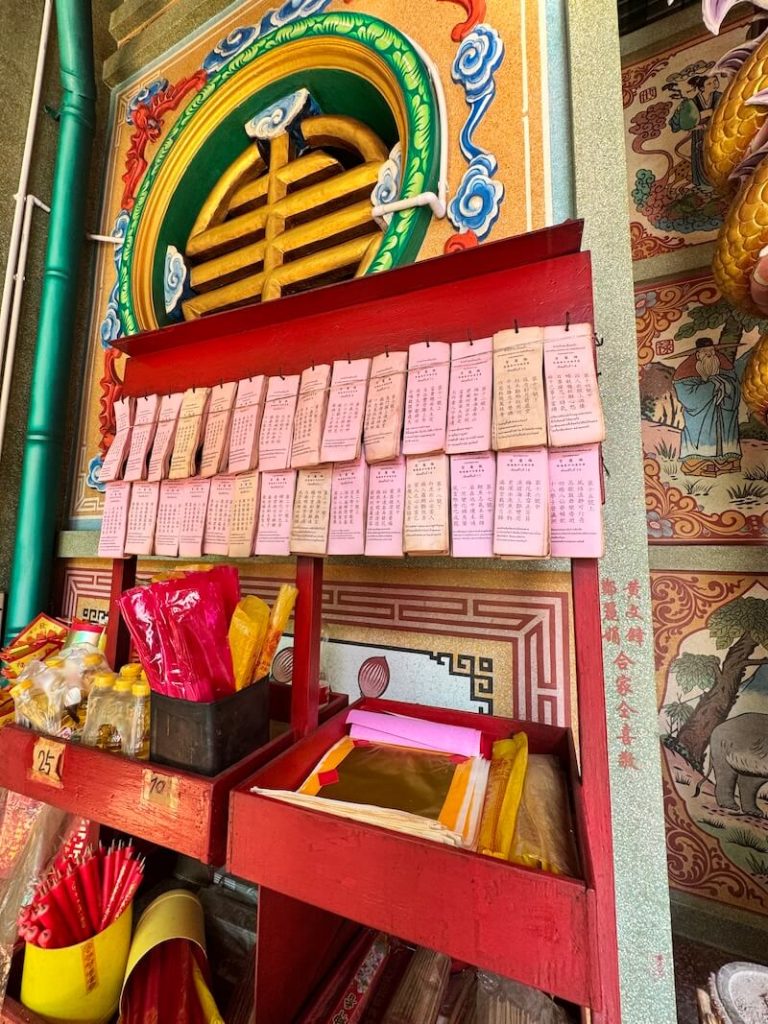
This name roughly translates to "offering blessings to all people" in Chinese: which it does beautifully, simultaneously visible yet tucked away, private yet indeed open to all.
It's long-served as a spiritual place of Bangkok's small but vibrant Chinese population, who make Talat Noi what it is.
Visiting Hok Lien Keng Shrine
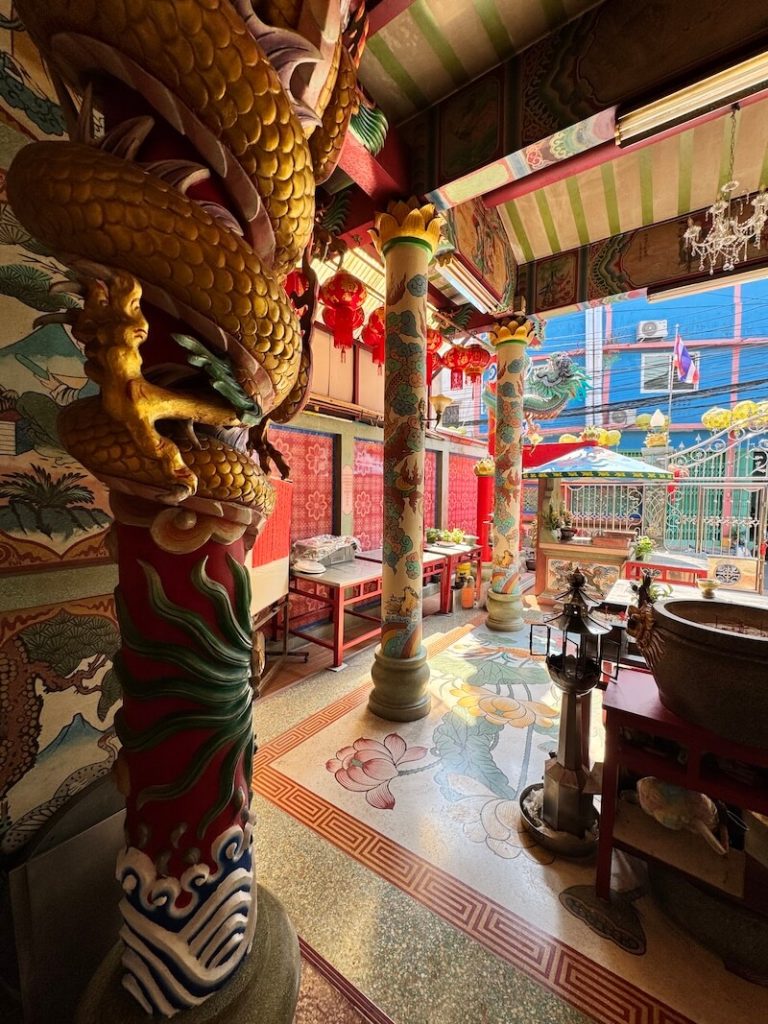
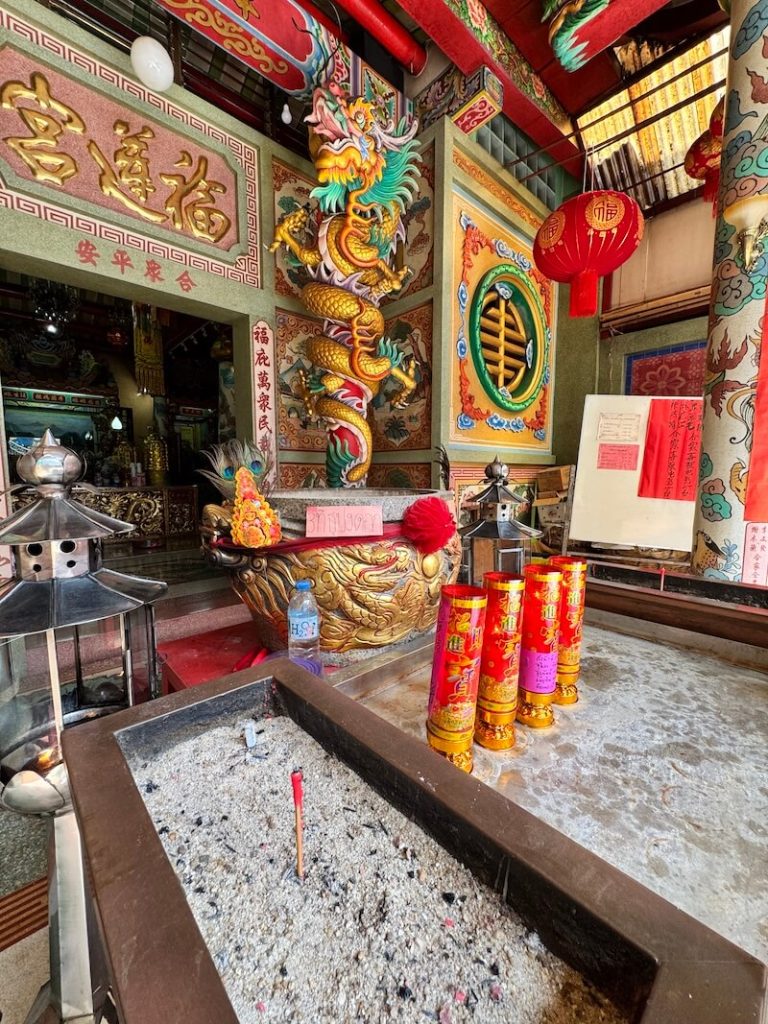
This small Chinese shrine is free to visit, and it's part of the deep roots of Talat Noi's vibrant Hokkien Chinese community of Talat Noi.
While it’s small, there’s a lot to take in. Architecturally, it blends Thai and Chinese elements in that same effortless way that so much of Talat Noi does.
Before you even enter the shrine itself, you can see its beauty from the road, piquing your curiosity with its unique kelly green-and-turquoise pagoda painted with beautiful Chinese decorations right when you enter, to the left of the gate.
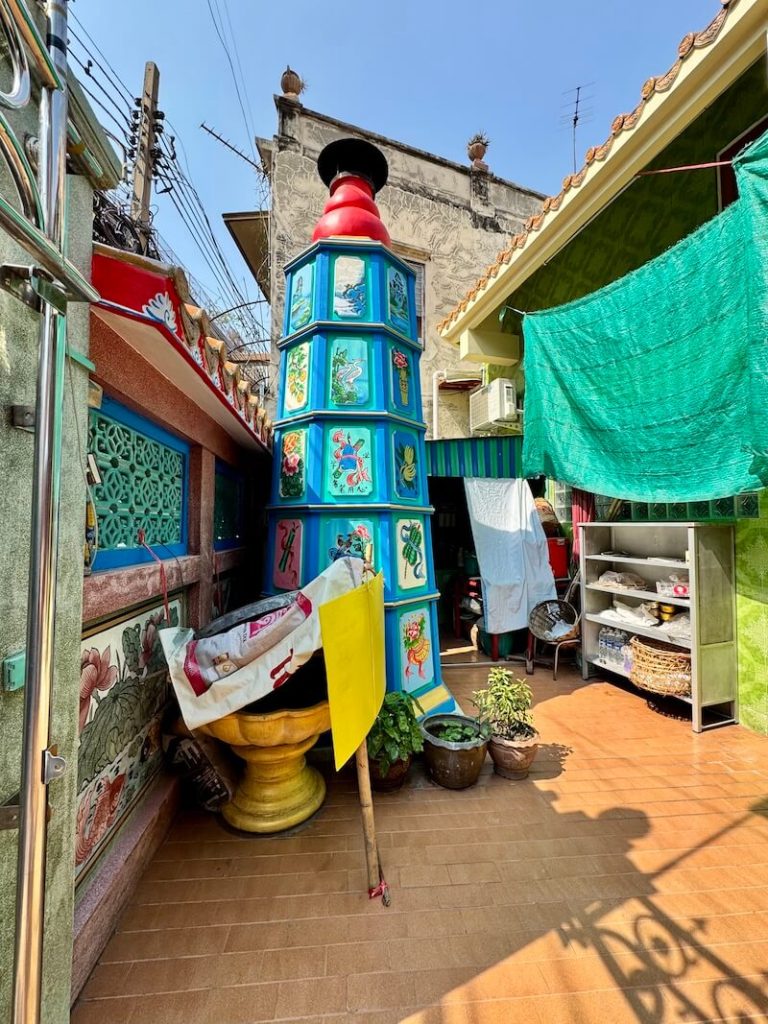
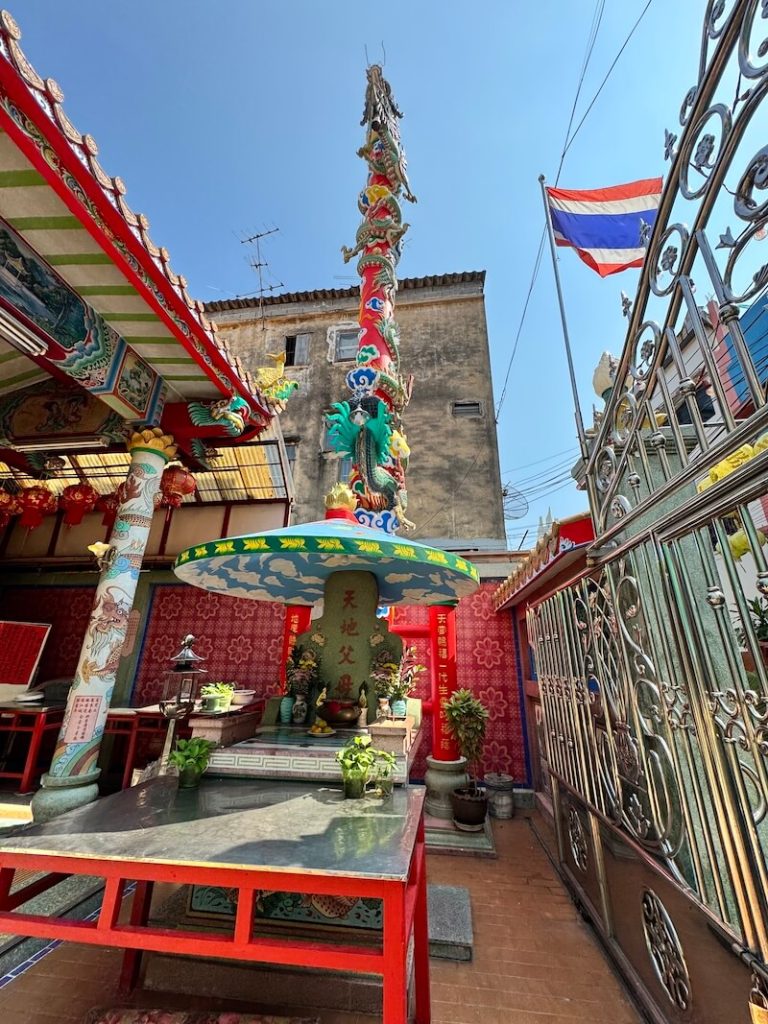
On your right, a red rising dragon pillar stands tall towards the sky, painted with other mythological figures: these ornate details feel straight out of classic Chinese temple design, but with a distinct Thai undertone.
As you enter, you'll find even more hidden details that charm and captivate. Take off your shoes and walk on the ceramic inlaid floor featuring koi fish in a lotus pond, a very traditional Buddhist motif.
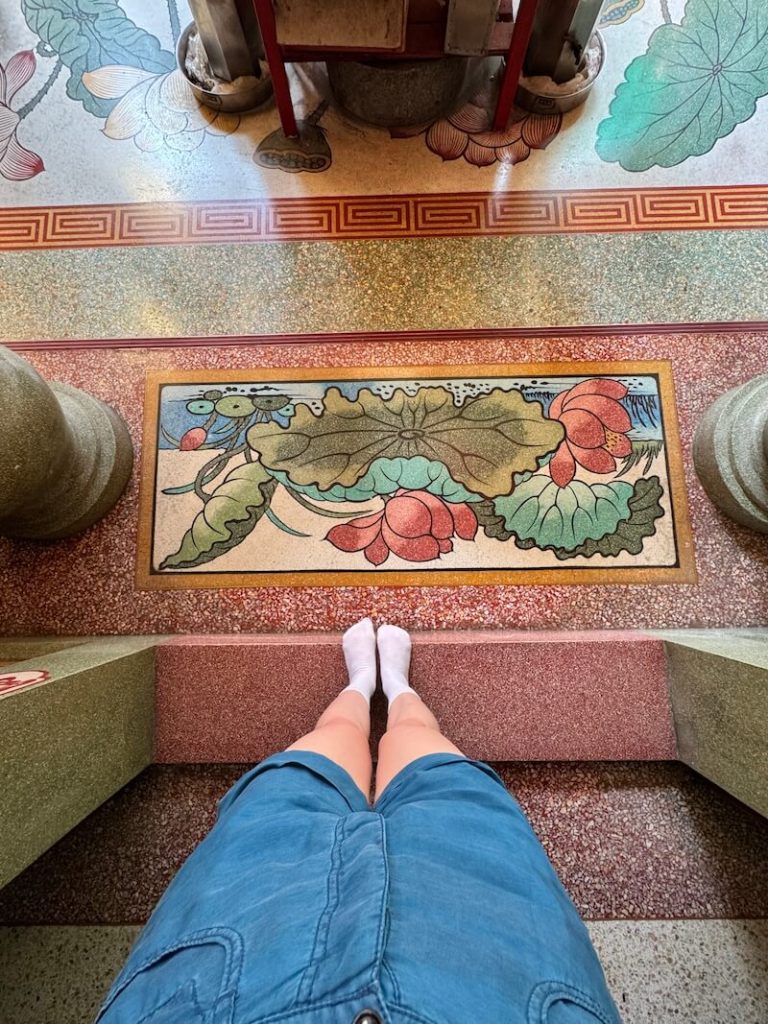

All around you, you'll see prayer candles, incense, Chinese red lanterns, pillars with dragons and lotus flowers: it's one of the more unique Chinese shrines I've visited, likely due to its mix of Thai influences.
In this area, you’ll find two small cushions where you can kneel and pray, facing a red-and-gold dragon-embossed table that holds a variety of prayer implements like statues, incense holders, and the like.
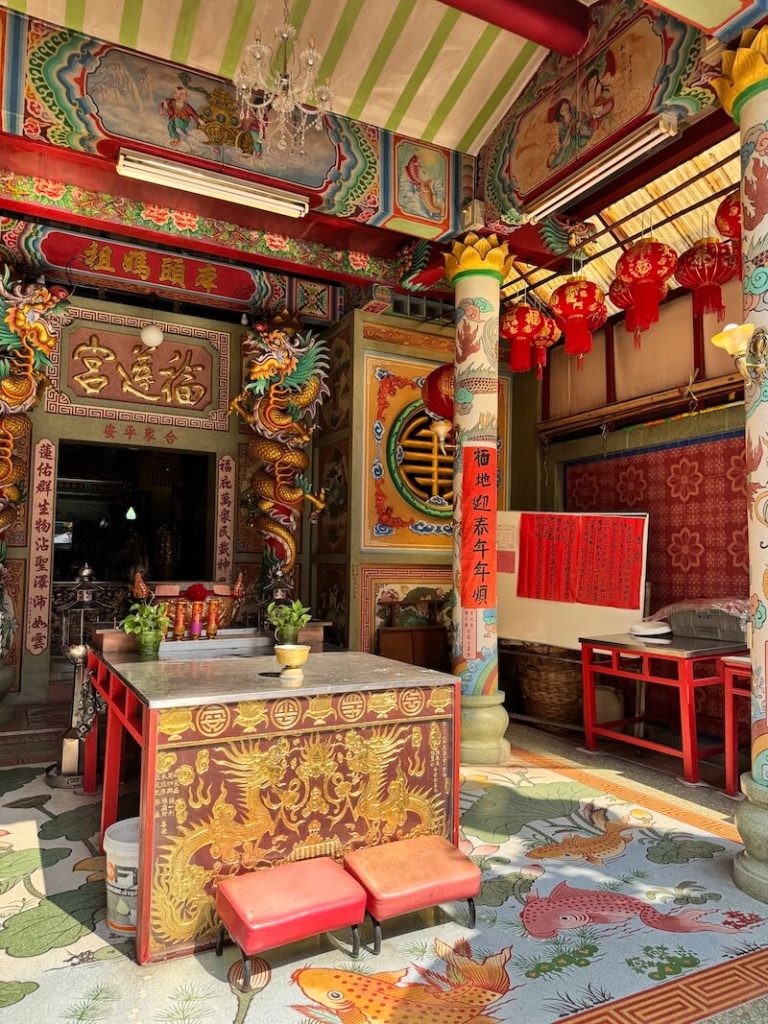
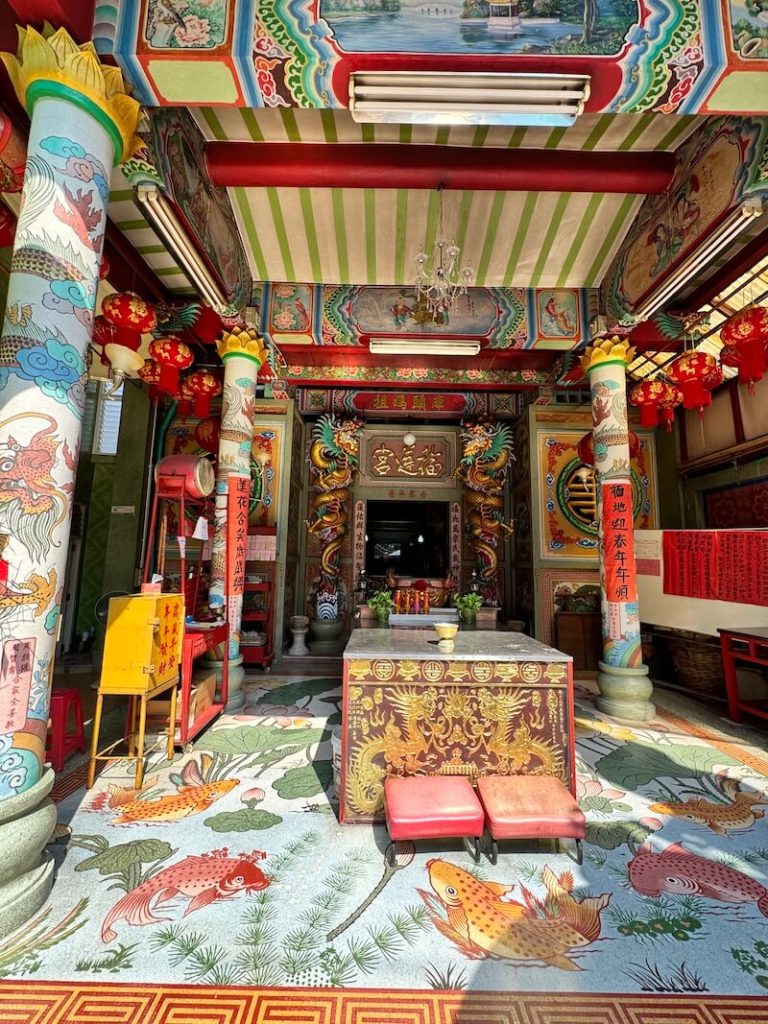
Inside you'll find some more areas to pray and kneel as well as figures of various icons and important figures to the shrine's upkeep and history.
Again, nothing here is flashy, but if you like finding the kind of places that don’t show up in glossy travel guides, this one’s got soul!
Finding Hok Lien Keng Shrine

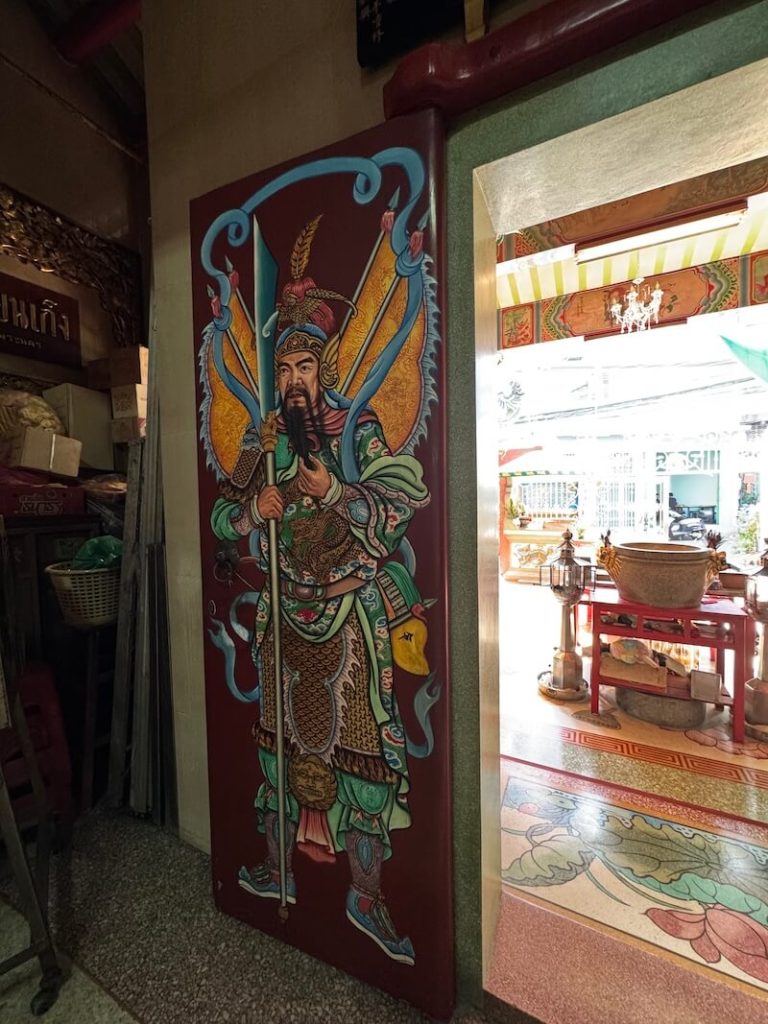
This is actually not correctly marked on Google Maps. It is marked as Chao Mae Thapthim Shrine, but after much research, I confirmed that that is actually incorrect; that's a different shrine located a few kilometers away, one that was the subject of the documentary The Last Breath of Sam Yan.
The confusion of this likely stems from the fact that there is a Chao Mae Thapthim image inside the complex, but that is a commonly revered figure amongst the Hokkien and Teochew Chinese people. It appears that Chao Mae Thapthim is the Thai translation of the name of the traditional sea goddess named Mazu.
As confirmed by locals, this shrine is actually named Hok Lien Keng Shrine (ศาลเจ้าฮกเลี่ยนเก็ง) or ศาลเจ้าแม่ทับทิมปึงเถาม่ (Mae Taptim Pung Thao Ma Shrine).
You can find it at the intersection of Soi Charoen Phanit and Charoen Krung 20 Alley, but on Soi Charoen Phanit, about 20 meters from the intersection.
Sources
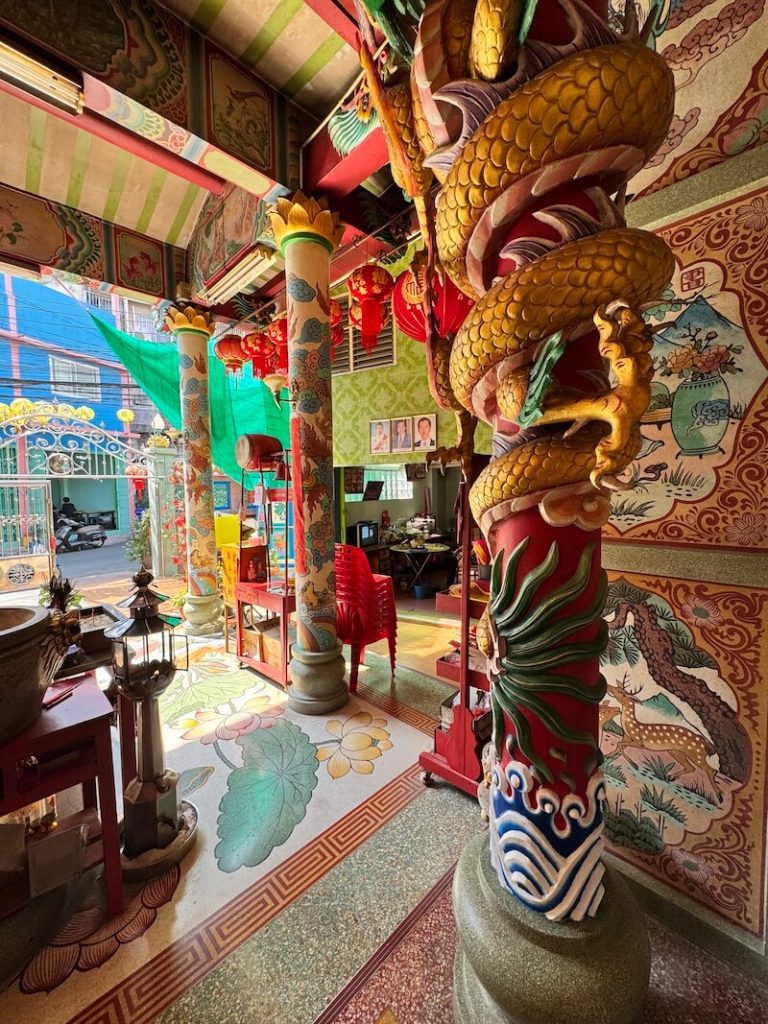
Please respect the work that went into this guide by not stealing any information for your own blog without citing my research or the research of others, which I've listed below.
Special thank you to the sources that I translated or found during my research, without which I could not have created this guide:
- Wongnai (special thank you to the review from Coke Somchai)
- Anyflip scanned resource on Talat Noi

